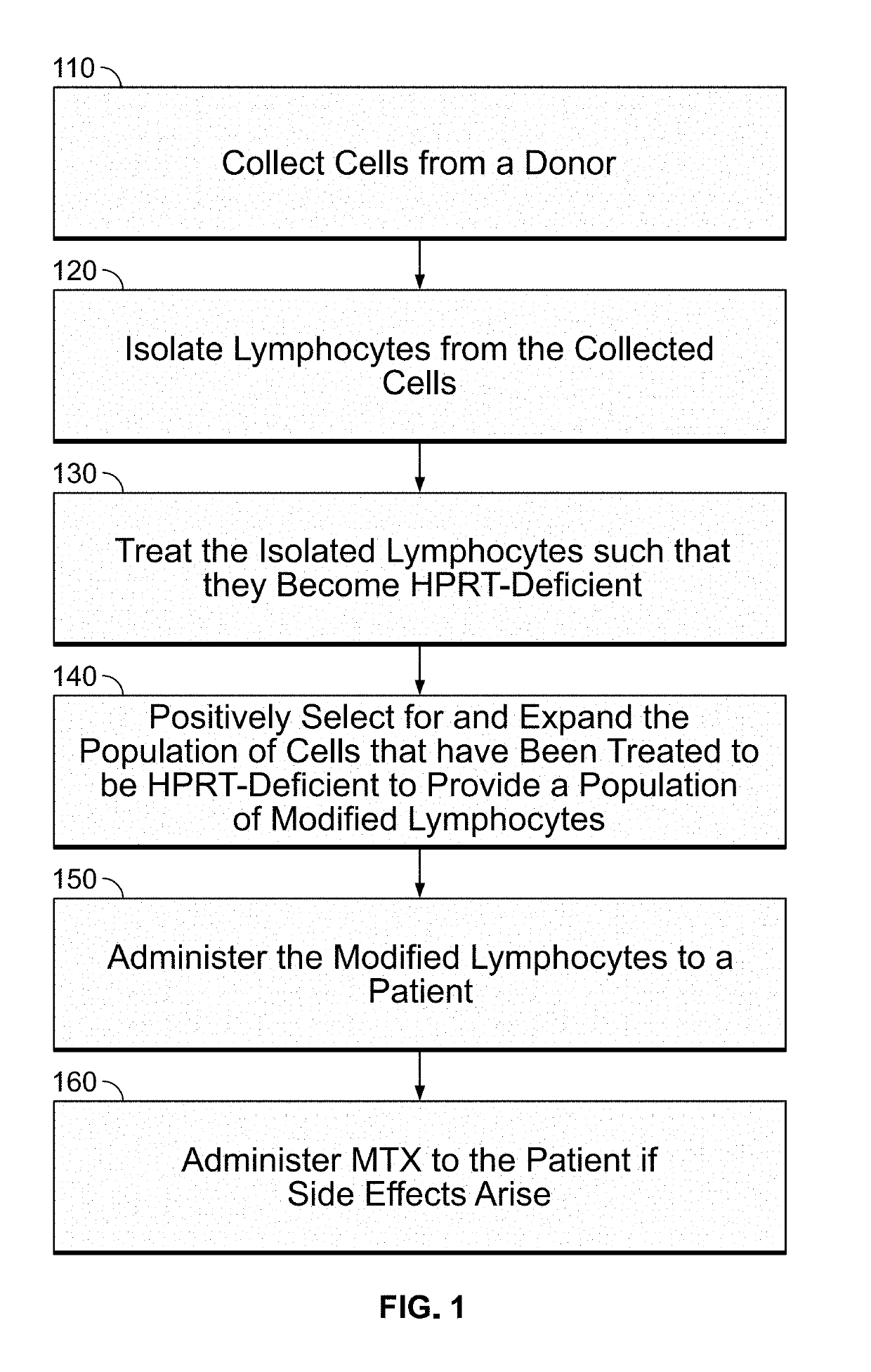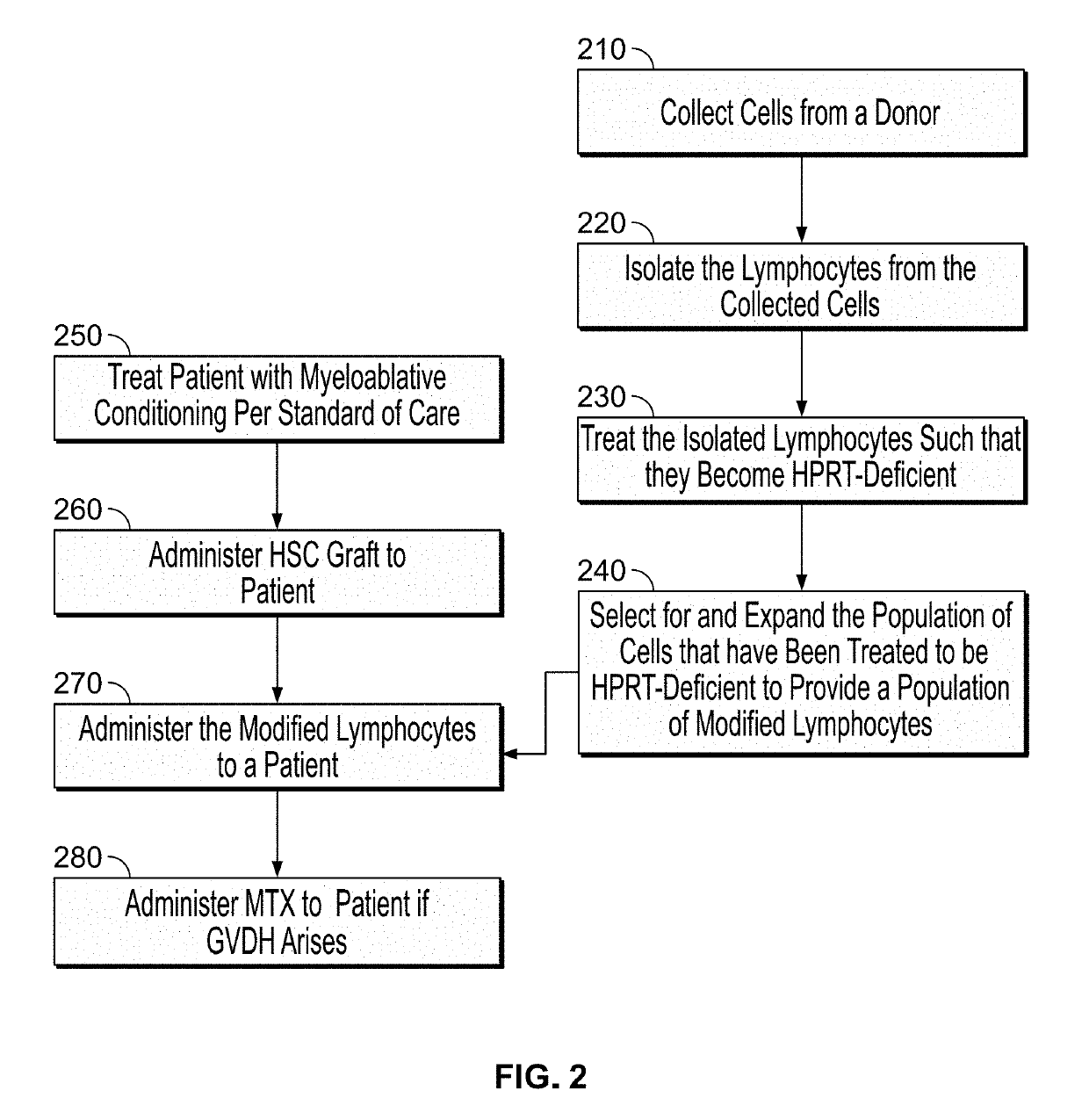Modulatable switch for selection of donor modified cells
a technology of donor-modified cells and switchers, applied in the field of molecular biology, can solve the problems of compromising the overall efficacy of hsct, affecting the survival rate of patients, so as to reduce the side effects, suppress, or control the effect of side effects
- Summary
- Abstract
- Description
- Claims
- Application Information
AI Technical Summary
Benefits of technology
Problems solved by technology
Method used
Image
Examples
example 1
[0142]CAR-T cells are produced by infecting the cells with the CAR construct in tandem with the shRNA to HPRT. This is in a single lentiviral vector with the CAR and shRNA driven by different promoters (Pol II and Pol III respectively). It is believed that if the shRNA targeting HPRT is within a miRNA framework, it could also be expressed from a Pol II promoter (maybe even the same promoter).
[0143]The transduced CAR-T shHPRT cells are then infused into a leukemic patient and anti-leukemia response monitored while if needed, expanding the CAR-T shHPRT cells with 6TG. Once the effect is impacting, a turn-off strategy using methotrexate to kill the transduced CAR-T shHPRT cells can be contemplated. This kill-off strategy is put into place if an inflammatory response or undue clonal proliferation of the CAR-T shHPRT cells is seen. It should be noted that some anti-leukemia antigens are also present on normal healthy cells and may give an untoward effect. Thus, applying this selection / su...
example 2
[0144]In allogeneic bone marrow transplant for hematological malignancy, donor T-cells are included with bone marrow transplant for an anti-tumor effect. This is important to eliminate residual disease following pre-transplant conditioning. In this example the donor T-cells are transduced with a lentiviral vector containing shRNA to HPRT before infusion and once infused the donor T-cell impact is assessed. As the Graft vs Leukemia (GVL) effect is monitored, if there is consequent Graft versus host disease (GVHD) this can be ameliorated using the “kill’ switch with methotrexate. This allows GVL without consequent GVHD.
example 3
[0145]In allogeneic bone marrow transplantation there is a delayed immune recovery with a risk of adventitious agent infection. To guard against this and maintain T-cell activity, donor T-cells are given that have been transduced with a lentiviral vector containing HPRT. Over time this will provide ancillary control over potential infections until T-cells derived from the bone marrow transplanted stem cell reconstitute the hematopoietic system. If there is untoward inflammatory response or any other donor T-cell related AE they are eliminated using methotrexate. This allows anti-infection immune control without GVHD.
PUM
| Property | Measurement | Unit |
|---|---|---|
| time | aaaaa | aaaaa |
| body weight | aaaaa | aaaaa |
| purity | aaaaa | aaaaa |
Abstract
Description
Claims
Application Information
 Login to View More
Login to View More - R&D
- Intellectual Property
- Life Sciences
- Materials
- Tech Scout
- Unparalleled Data Quality
- Higher Quality Content
- 60% Fewer Hallucinations
Browse by: Latest US Patents, China's latest patents, Technical Efficacy Thesaurus, Application Domain, Technology Topic, Popular Technical Reports.
© 2025 PatSnap. All rights reserved.Legal|Privacy policy|Modern Slavery Act Transparency Statement|Sitemap|About US| Contact US: help@patsnap.com



